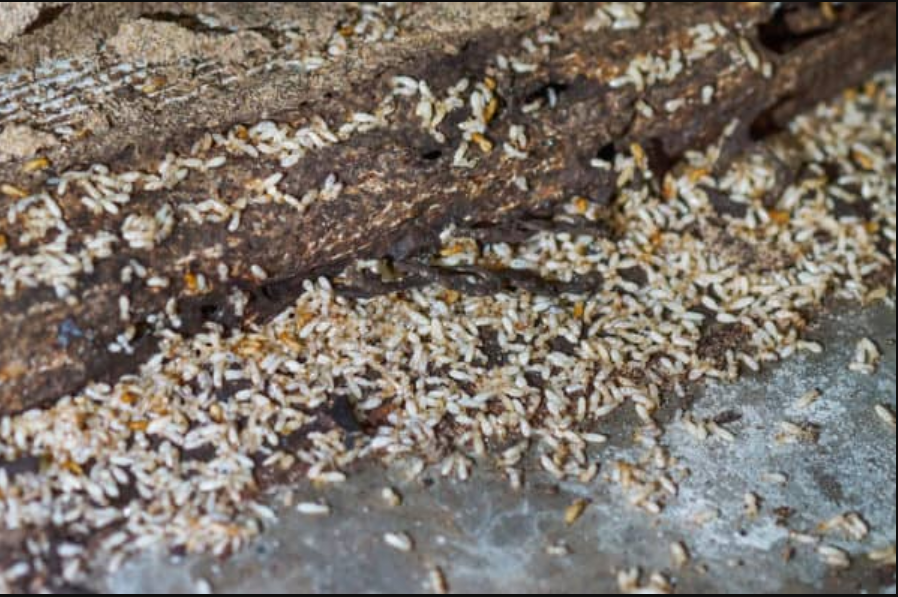Termites are nothing new in San Diego, but many residents and pest control experts are noticing more activity lately. A combination of climate, environmental changes, and human factors seem to be contributing. Here are the likely causes, the species involved, and what you can do.
1. Favorable Weather & Climate Conditions
- Mild, wet winters + warm, humid periods: San Diego’s Mediterranean climate is precisely the kind of environment termites love. Moisture from rain helps subterranean and dampwood termite populations, and even drywood termites benefit when humidity is higher. license-to-kill.com+3Agricultural Pest Control Services+3Termite Control San Diego –+3
- Rainfall timing: Heavy rains followed by warm, calm weather trigger swarming events. Termites send out winged reproductives (“swarmers”) to establish new colonies when moisture is present in the soil or wood. nixtermite.com+2Agricultural Pest Control Services+2
- Warmer overall temperatures: Longer warm seasons can expand the active periods for termites in San Diego. When winter is mild, termites don’t slow down as much, leading to more feeding, growth, and chances for colony expansion. license-to-kill.com+1
2. Species Behavior & Lifecycle
- Drywood, subterranean, and dampwood termites all occur in San Diego. Each type behaves slightly differently. Drywood termites infest dry wood and don’t need soil contact; subterranean termites live in the soil and build tunnels or mud tubes; dampwood termites prefer moist or decaying wood. Green Flash Pest Control+2Termite Control San Diego –+2
- Swarming seasons vary by species: There isn’t just one fixed season. Different termite species swarm at different times of year depending on weather triggers. This means more chances that any given favorable day can induce swarming. hi-techtermitecontrol.com+2nixtermite.com+2
3. Environmental and Human-Influenced Factors
- Standing water, soil moisture, and leaks: Homes or properties with poor drainage, leaks in plumbing or roofs, or moisture build-up (in soil, wood, mulch etc) give termites the moisture they need. Green Flash Pest Control+1
- Wood-to-soil contact: If wood parts of buildings are in contact with soil (deck posts, siding, etc.), that’s a direct pathway for subterranean termites. Wood stored too close to the home is also risky. Green Flash Pest Control+1
- Aging buildings & exposed wood: Older homes, or those with many wooden elements (trim, siding, overhangs), exposed or untreated wood, or less maintenance may be more vulnerable. Termite Control San Diego –+1
4. Increased Awareness and Reporting
- It’s also possible part of what seems like “more termites this year” is people noticing them more, or public awareness being higher, or more inspections being done. Once someone sees swarmers or signs, they report it, increasing perceived prevalence.
- Swarmers are more noticeable (winged insects flying around), so after rains or warm weather people are more likely to see them. If conditions encourage more swarming, even if colony numbers are similar, people are just witnessing more.
What This Means for Homeowners
Because of the above reasons, termites in San Diego are more active and potentially more destructive this year. If you haven’t already, taking early prevention steps is especially important. Here are a few suggestions:
- Check for leaks (roof, plumbing, gutters) and reduce excess moisture around your house.
- Avoid wood-to-soil contact; keep mulch and wood piles away from the foundation or siding.
- Inspect exposed wood (decks, trim, fences) regularly for signs like hollow wood, mud tubes, discarded wings, or frass (termite droppings).
- Consider getting professional inspections, especially after heavy rains or warm periods.
Address:
3755 Avocado Boulevard #300, La Mesa CA 91941

